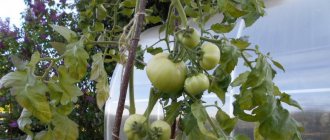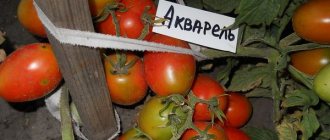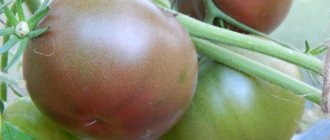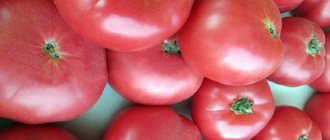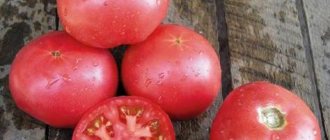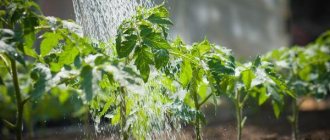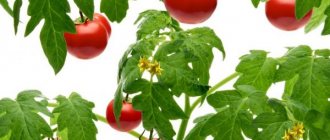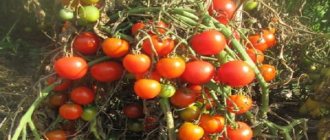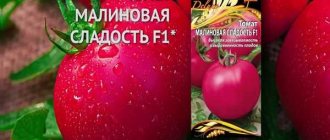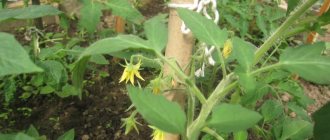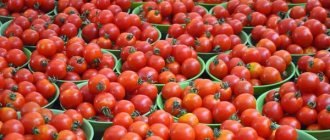Description of the variety in detail
Anna German is a variety of tomato not certified by the State Variety Commission. This is a pure variety of folk selection. It became one of the first yellow-fruited domestic tomatoes. When ripe, the tall bushes are covered with thick clusters of fruits resembling small lemons (see photo).
Attention! A certain similarity with the Wonder of the World tomato has been noticed. But genetically the two plants have many differences.
The small size of the fruit makes them convenient for whole pickling in jars. The taste of tomato, like that of other yellow relatives, is distinguished by sweetness with a minimal presence of sourness. Tomatoes are also used fresh, in sauces, and for decorative purposes.
According to ripening time | By type of growth | By type of use | By growing method | Fruit weight (g) | Productivity (kg/m2) | Fetal characteristics |
| Mid-ripe (110-115 days) | Indeterminate (120-180 cm) | Universal | For open ground and film shelters | 50-100 | Up to 12 in an open bed, up to 14 in a greenhouse | Yellow in color, oval in shape, with a spout and a smooth surface |
Description of the tomato variety Jempakt, its characteristics and yield
Tomato Jempakt F1 is a hybrid variety produced in Japan. The plant appeared in Russia recently, let’s look at its features and characteristics.
Plant characteristics
Determinate, medium growth is limited, does not exceed 60 cm, so does not need a garter. The tomato is intended for planting in open ground, does not require special growing conditions, the root system is powerful, the stem is strong, easily holds the weight of the fruit, and does not break. It is recommended to plant 4 plants per square meter of area at a distance of 40–50 cm from each other. The seeds are sown in March; they should be planted in the garden with the onset of warm weather; the period varies depending on the region of residence. The ripening is average, there is no green spot on the stalk.
The Jempakt tomato is also suitable for greenhouse cultivation, this is especially true for the Siberian region, where frosts recede in June and the summer period ends in August. Seedlings can be planted under film as early as May. Later, it is necessary to ventilate it by opening the windows and doors during the day, and do not forget to cover the bushes in time at night.
Description of fruits
The fruits are large, on average the weight of one tomato reaches 120 grams, and can be grown up to 250 grams. Hybrids set well in both warm and cool weather, ripening begins right on the branch. A medium-yielding variety, you can collect 1–1.5 kg of fruit from one meter of bed. Tomatoes are round, smooth, regular in shape, have a dense consistency, and a dark red color. They have juicy pulp, intended for fresh consumption, for salads, juices, sauces, winter preparations, good taste. They are not suitable for preservation in their entirety as large fruits do not fit into the neck of the jar.
The bushes do not need additional feeding; they obtain all the necessary substances from the soil, thanks to their powerful roots. The tomato is able to germinate and bear fruit under any climatic conditions and has the ability to adapt to the weather.
The plant resists diseases that are more common:
- verticellosis;
- fusarium wilt;
- root nematode;
- bacterial spot virus;
- root rot.
Summer residents note that the big disadvantage of the variety is its susceptibility to blossom end rot. In addition, some reviews indicate the irregular shape of the fruit.
Fruiting of the Jempact F1 tomato begins at the end of July, depending on your region, at this time the bushes are strewn with fruits that ripen together on the branches. If you wish, you can pick it and wait until it gets home. Picking occurs from the first leaf; after planting in the ground, it is recommended to tie up the tomatoes.
Tomato variety Jempakt F1 germinates and bears fruit equally in a greenhouse and in the open air. The fruits are uniformly colored, there are no white spots at the junction with the stalk, and there are no seed chambers inside either. Tomato fruit sets and ripening occurs almost at the same time. Care includes weeding, watering, loosening the soil; no fertilizers, including biological ones, are needed. The plant is unpretentious, mid-season, high-yielding.
Advantages and disadvantages of the variety
Taste is the main advantage of a tomato, which allows meaty tomatoes to be versatile in culinary use. But the advantages of the plant are not limited to this:
- Possibility of cultivation in different types of soil. Experts advise growing tomatoes outdoors only in regions with a mild climate.
- Productivity is above average. The plant bears fruit abundantly both in the garden and under cover. One brush grows up to 30-40 “lemons”. 3-4 kg are collected from the bush.
- High commercial quality of tomatoes. The strong thin skin does not allow them to burst on the hands and ensures good transportability and safety when picked.
- Long-term fruiting - right up to the first frost.
Attention! The harvest can be harvested in whole clusters without separating the tomatoes from the stalks.
Tomatoes also have negative characteristics:
- tendency to intensively educate stepchildren;
- the need to form a bush;
- need for a garter;
- instability to late blight.
Features of agricultural technology and real reviews from gardeners
The originator at one time developed and tested in practice special agricultural technology for this variety. Tomato is grown by seedlings. Rooting age: 60-65 days. The culture does not do well in dense plantings and becomes vulnerable to harmful microorganisms. Therefore, use this technique:
- plant no more than 4 young bushes per 1 square meter. m;
- shape the tomato into a single stem;
- plant the bush once every 10 days;
- Ventilate the garden bed regularly (if grown in a greenhouse).
When planting seedlings, deepen its trunk 5-10 cm into the ground. Place the seedling itself horizontally. Cover the bottom of the stem with soil. Some gardeners leave several lower stepsons, bend them to the ground and get additional roots.
Advice. Gradually remove all the lower leaves once the first flower cluster has set. It appears above leaves 9-11.
The Anna German variety has collected a lot of positive reviews. People independently obtain and distribute its seeds. A summer resident with the nickname Cinderella boasted of a beautiful and tasty harvest. She formed the tomato into 1 trunk. I did not collect the fruits right away; I left them to ripen a little on the branches.
Svetlana from the Moscow region notes the yield and taste of tomatoes. The harvested tomatoes became even tastier after storage. Alla from Yaroslavl region. and Semechka from Krasnoyarsk confirm these characteristics. Tomato has a positive reputation among the people. Long-term cultivation practice, good fertility and tasting properties speak for it.
Tomato Anna German - description and characteristics of the variety
Letter of recommendation of the Anna German variety
The Anna German tomato belongs to an indeterminate variety; once a certain size is reached, the bush does not stop growing, fruiting continues until the day before frost.
The plant is suitable for growing in spring-summer, as well as in autumn. The fruits are elegant yellow in color, oval in constitution, retain their taste and appearance for a long time after harvesting. Perfectly suitable for whole-fruit canning.
The culture is demanding of light and warmth. Recommended for (avoiding cultivation in open ground in the southern regions or in greenhouse conditions everywhere. Anna German eggs are mid-early, tolerant to dry rot, sunburn, belong to the group of raceme tomatoes. The height of the bush is 150 cm, requires tying. The plant is resistant to viral and fungal diseases, Pomona gifts are universal in use.
Features of agricultural technology
Below are recommendations that you can follow to produce an excellent harvest of tomatoes even in a small area.
- Water the backside at the root with water heated to a temperature of 18-22 degrees. Flooding is organized in the morning, until the temperature of the water and atmospheric air has equalized. In this case, tomatoes no longer have the opportunity to absorb nutrients and minerals and absorb the necessary moisture from their roots.
- During the fruiting period, water less frequently. This will protect the pomona gifts from cracking and improve the taste, since with excess moisture the pomona gifts will turn out watery. The optimal watering regime is twice a week, perhaps every ten days.
- Maintain optimal temperature. If it’s a little hot inside the greenhouse, the Anna German tomato will not grow well. Then, to reduce the air temperature, place stones between the rows (choose either dark ones from nature, or paint them black yourself). Dark glass bottles are suitable as an alternative. Such surfaces absorb ultraviolet rays well and thereby lower the temperature in the greenhouse.
- During the vegetative development of Annusha German tomatoes, apply fertilizer three times. The main components of feeding should be phosphorus and potassium. The first time fertilizer is applied 10 days (a year) after planting, the second time spraying is carried out after 30 days (repeating it after the same period of time at least one more time).
- During the period of fruit set, do not neglect such useful components for their development as manganese, boron, copper, molybdenum, serpentine. If the soil is neutrally acidic, don't forget to add iron. Use immunomodulators, for example, Zircon, Epin.
- The flowers of this variety are self-pollinating, but the quality of pollination can be increased. To do this, you need to organize the optimal level of air humidity, so that it is moderately dry at a temperature within 24-26 degrees.
- The productivity of tomatoes depends on many different factors. The conditions of agricultural technology, the novelty of seed material, and climatic factors are important here. The Anna German variety is characterized by high yield under standard growing conditions. In greenhouse conditions, it is much easier to control the conditions of the agricultural background. When growing in open ground, the bushes do not need to be pinched, but in a greenhouse, where every centimeter of free space is valuable, except for. Ant. Formation is indispensable. With the correct formation of the copra variety, the fruits are dense, very sweet (virtually without sourness).
Why is there no tomato harvest?
- The recommended thermal regime for the variety was not observed.
- The relative humidity was excessively high.
- The soil received little moisture.
- Plants did not receive sufficient nutrients.
- There was carbon deprivation in the air.
- Seeds for planting were prepared in violation of breeding rules.
The correct formation of the bush is of great importance. With proper care, pomona fruits turn out dense, smooth, very sweet, with a subtle sourness.
